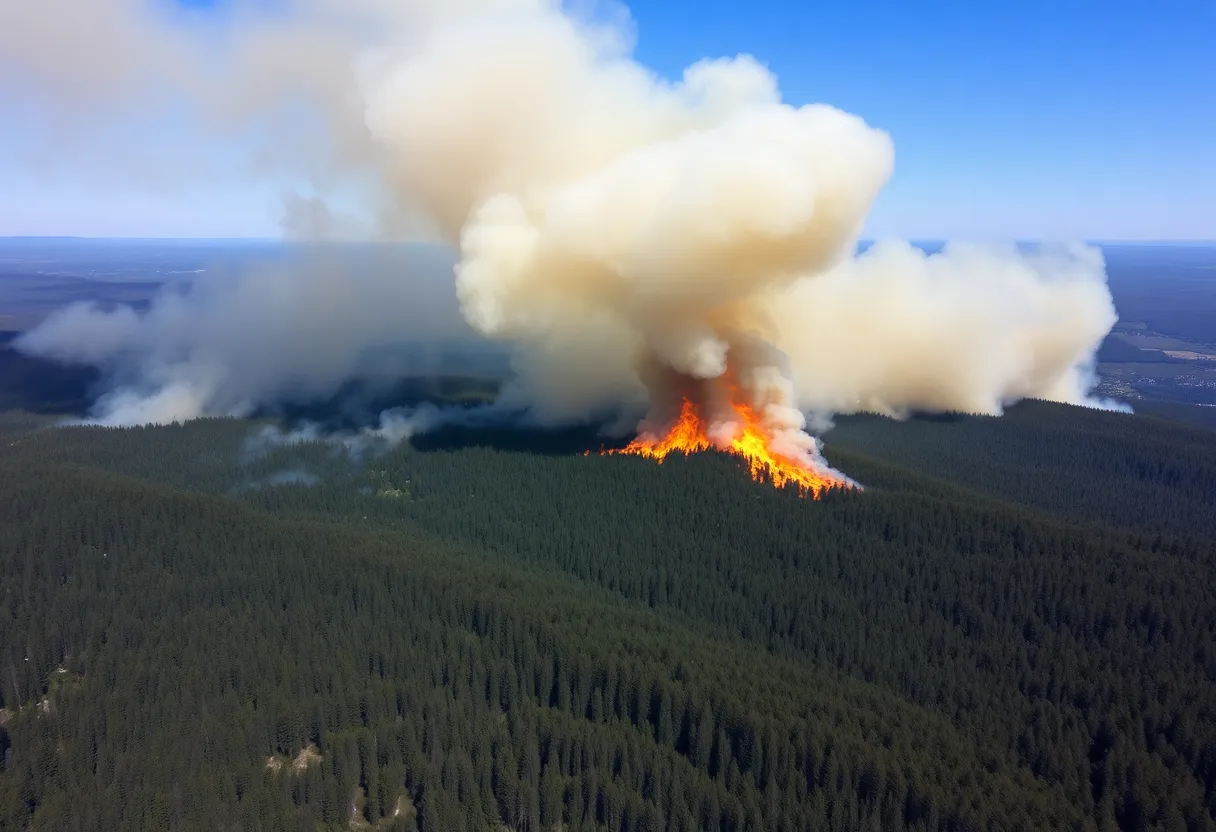News Summary
Investigators are delving into the causes of recent wildfires in Los Angeles, focusing on power lines’ potential role. The Eaton and Palisades fires have raised community concerns about electrical infrastructure, reflecting a troubling trend in California’s wildfire history linked to utility issues. As investigations unfold, the significance of understanding wildfire origins for safety and prevention is emphasized.
Investigators Dive Deep Into Causes Behind Los Angeles Wildfires
With the recent wildfires impacting Los Angeles, including the destructive Palisades and Eaton fires, a team of investigators is hard at work to uncover what caused these fierce blazes. Residents are buzzing with concerns about the role of electrical infrastructure, as many suspect that power lines might be to blame for sparking these fires.
California’s Wildfire History
It’s essential to look at the bigger picture when discussing wildfires in California. Since 1992, a staggering 3,600 wildfires have been attributed to issues with power generation, transmission, and distribution. When we think about some of California’s most devastating fires, many can be traced back to utility poles or power lines. Just take a moment to consider this: approximately 12 power line fires have scorched over 200,000 acres in the regions northwest of Los Angeles since 1970.
A record kept by CalFire shows that up until January 13, 2025, California has recorded over 12,500 fires since the late 1800s, with a significant number of those having unknown or unidentified origins. Particularly alarming is that fires sparked by infrastructure-related problems have been on a troubling rise in recent decades. Notably, at least eight of the most destructive wildfires in California can be linked to electrical or power line causes.
The Eaton Fire and Community Concerns
One local fire that has raised eyebrows is the Eaton fire, which has already burned through over 13,000 acres, decimating about 5,000 structures. Residents of Altadena have even taken the initiative to sue Southern California Edison, insisting that the utility’s equipment played a role in sparking the blaze. The investigation into this fire remains active, as experts sift through clues.
It’s worth mentioning that this isn’t the first time electrical issues have led to infernos in California. The notorious 2017 Thomas fire began when high winds prompted Southern California Edison power lines to collide—a scenario that unfortunately is not unique. Similarly, the 2018 Camp fire stemmed from electrical arcing from a Pacific Gas & Electric power line, resulting in molten metal igniting nearby vegetation. Even Texas faced a chilling incident in 2024, where the Smokehouse Creek fire, burning over a million acres, resulted from a power line falling after high winds snapped a utility pole.
Investigation Efforts Underway
Looking specifically at the Palisades fire, which has claimed at least 5,000 homes and businesses and resulted in tragic loss of life, investigators are zeroing in on what has become the fire’s “crime scene”—the hills above Pacific Palisades. Interestingly, a fire that originated in the same area on January 1 is raising eyebrows too, as it might have smoldered and rekindled due to strong winds that plagued the region.
Eager eyewitnesses describe suspicious behavior from a group of young men near Skull Rock, where the fire spread rapidly. However, investigators caution against jumping to conclusions, as there isn’t any concrete evidence linking these individuals to the fire’s inception. Add to this the fact that firefighters had deemed the January 1 fire extinguished, leading to concerns around conditions that can enable smoldering embers to burst back to life.
What Lies Ahead
Winds drove the Palisades fire shortly after it ignited around 10:30 a.m. on January 7, catching many off guard. Investigators discovered that several of the power poles in the area date back to the 1930s, raising alarms about their structural integrity. Southern California Edison had begun a pole replacement project back in 2019, but issues with environmental regulations put a halt to that progress.
While investigations are still ongoing, with no definitive conclusions regarding potential arson, experts are keeping all avenues open, including possible electrical failures. It’s vital to remember that investigating such monumental fires often takes significant time, with some previous cases dragging on for over a year.
Moving Forward
Experts emphasize that understanding the causes behind these wildfires is crucial for improving safety measures and mitigating risks in the future. As California continues to grapple with its wildfire challenges, every detail and every lead matters greatly. The path ahead will require meticulous analysis and collective efforts to tackle this ongoing issue in a way that protects both homes and the environment.
Deeper Dive: News & Info About This Topic
- The New York Times: Palisades Fire Cause Investigation
- Wikipedia: Wildfires in California
- The Washington Post: Eaton Fire Investigation
- Google Search: California Wildfires 2025
- USA Today: Los Angeles Fires Live Updates
- Encyclopedia Britannica: Wildfire
- Forbes: Causes of California Wildfires
- Google News: California Wildfire Causes







